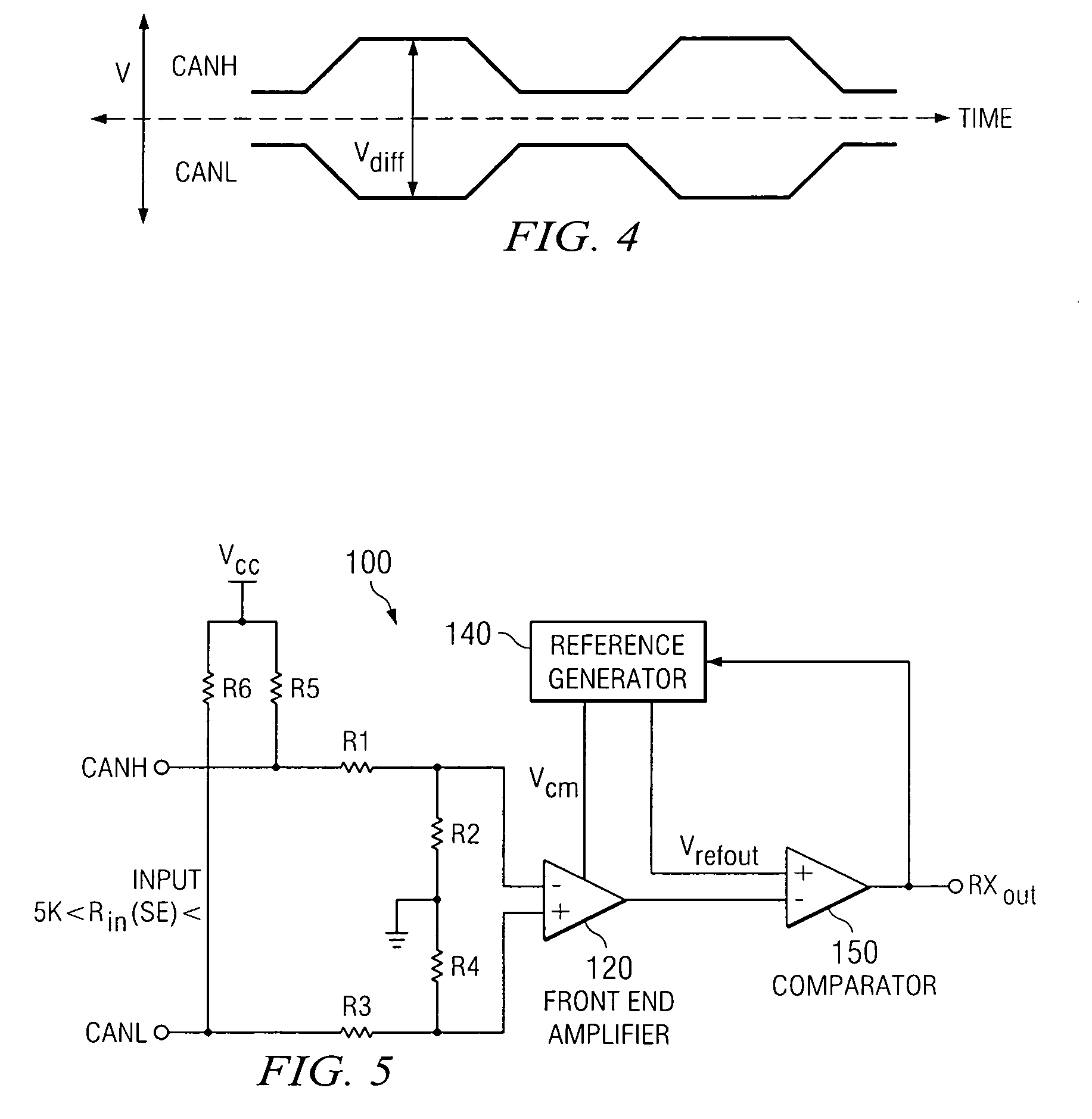High speed controller area network receiver having improved EMI immunity
a technology of emi and receiver, which is applied in the field of high-speed controller area network receivers, can solve the problems of emi creating errors in reading data, delay in the receiver affecting the speed of the transceiver,
- Summary
- Abstract
- Description
- Claims
- Application Information
AI Technical Summary
Benefits of technology
Problems solved by technology
Method used
Image
Examples
Embodiment Construction
[0023]One or more exemplary implementations of the present invention will now be described with reference to the attached drawings, wherein like reference numerals are used to refer to like elements throughout. The various aspects of the invention are illustrated below in a CAN receiver, although the invention and the appended claims are not limited to the illustrated examples.
[0024]One of the design challenges was to design an architecture that may be powered by a 5 volt supply voltage VCC and have a common mode voltage range that could possibly extend from +20 V to −20 V. The novel CAN receiver had to possess a good amount of rejection. Thereby, the basic challenge was that the input signal, CANH and CANL, represent signal that are a significant amount of voltage greater than the supply voltage VCC and signal to noise ratio could deteriorate if the input signal is divided down too much to avoid the high input common mode signal.
[0025]FIGS. 5 and 6 illustrates a block diagram of th...
PUM
 Login to View More
Login to View More Abstract
Description
Claims
Application Information
 Login to View More
Login to View More - R&D
- Intellectual Property
- Life Sciences
- Materials
- Tech Scout
- Unparalleled Data Quality
- Higher Quality Content
- 60% Fewer Hallucinations
Browse by: Latest US Patents, China's latest patents, Technical Efficacy Thesaurus, Application Domain, Technology Topic, Popular Technical Reports.
© 2025 PatSnap. All rights reserved.Legal|Privacy policy|Modern Slavery Act Transparency Statement|Sitemap|About US| Contact US: help@patsnap.com



